The following images will help to identify larvae of the elm zigzag sawfly (Aproceros leucopoda), and to distinguish the leaf damage they cause from damage caused by other species.
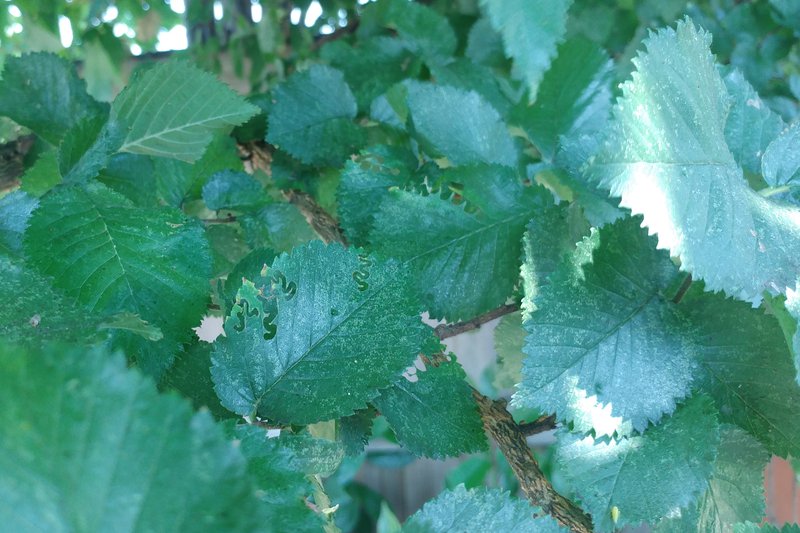
Pictured above are multiple feeding traces on elm leaves made by young larvae.
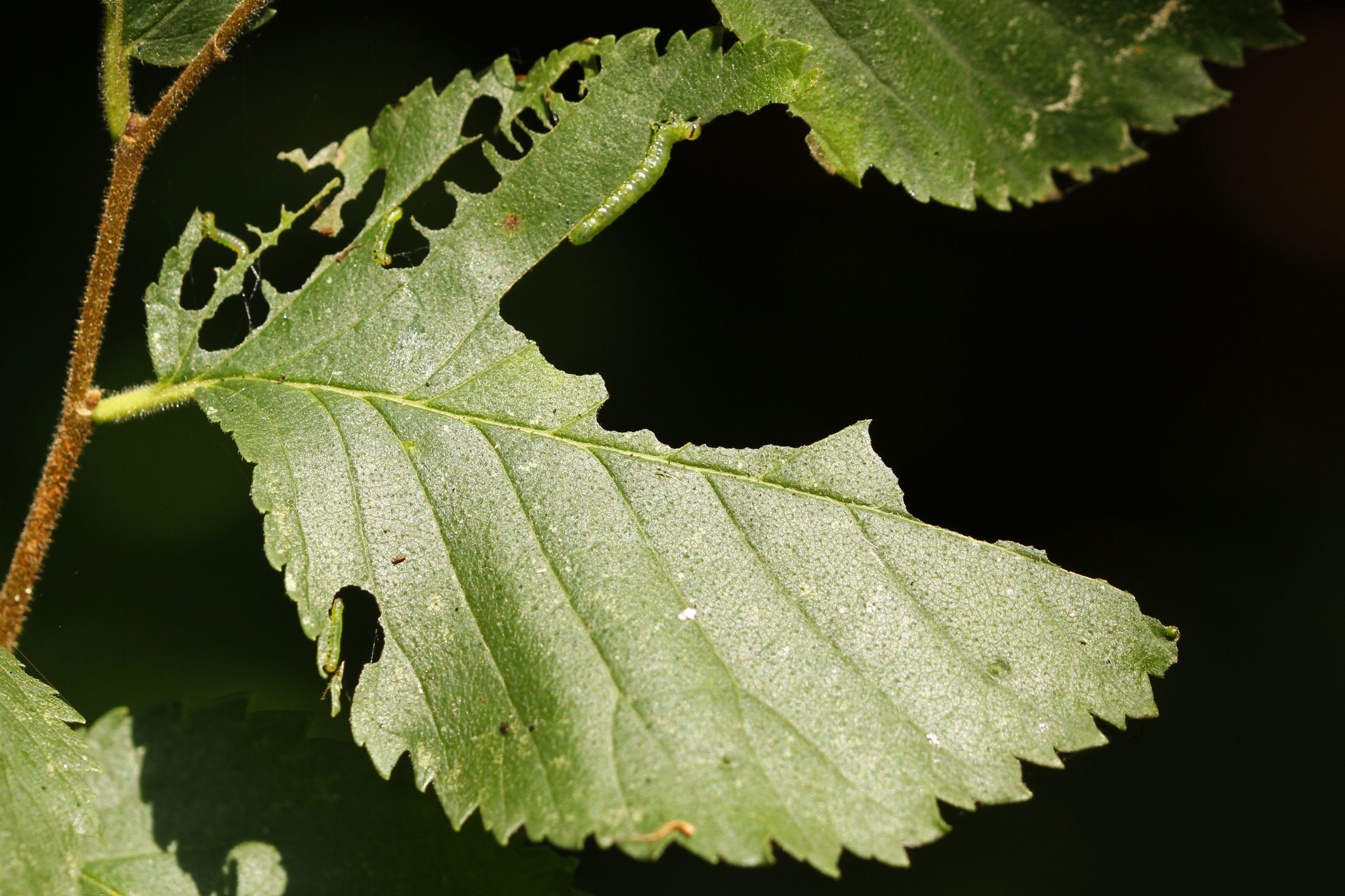
Pictured above are young and older larvae feeding on the same leaf, causing the different types of damage typical of their ages.
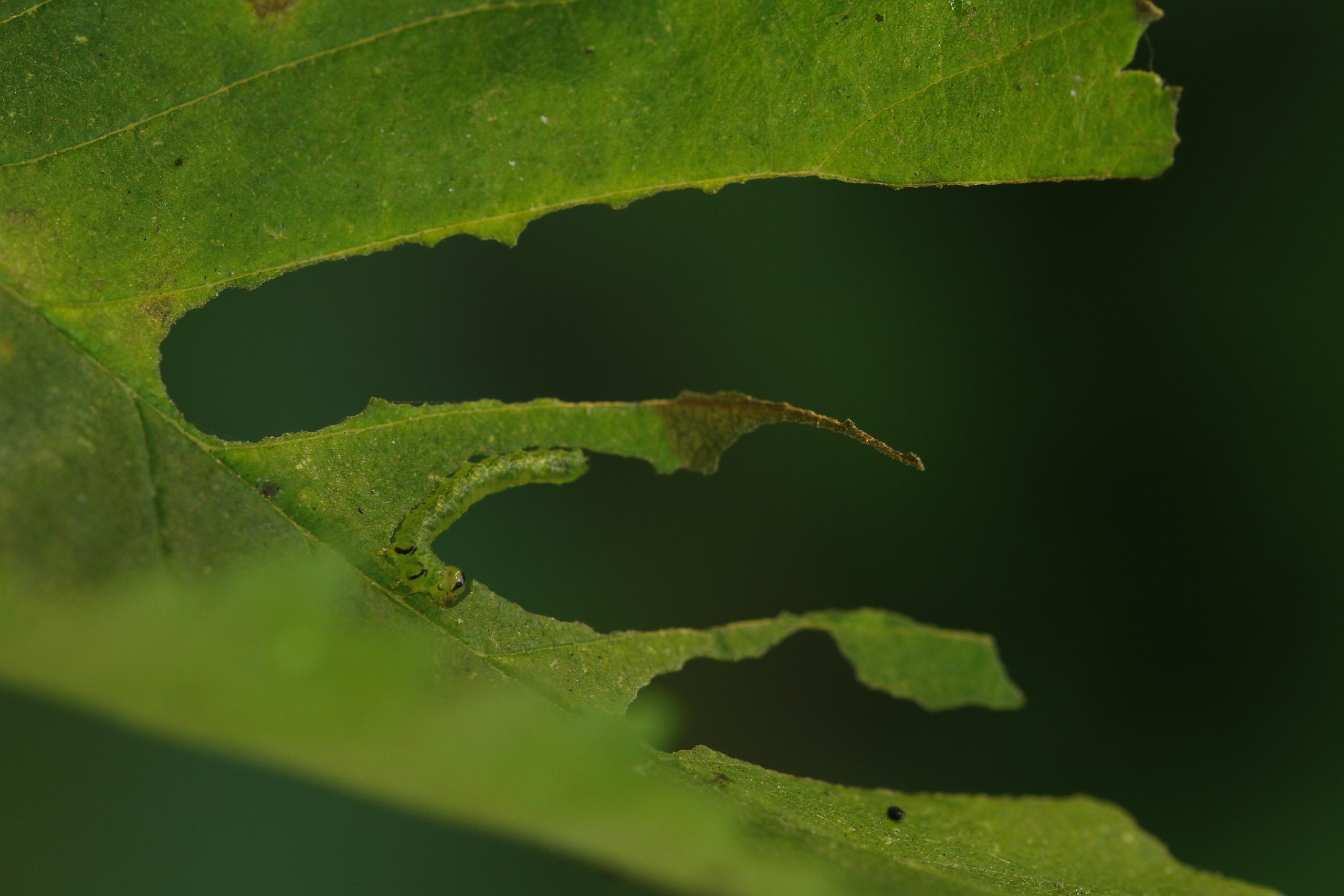
A mature larva feeding
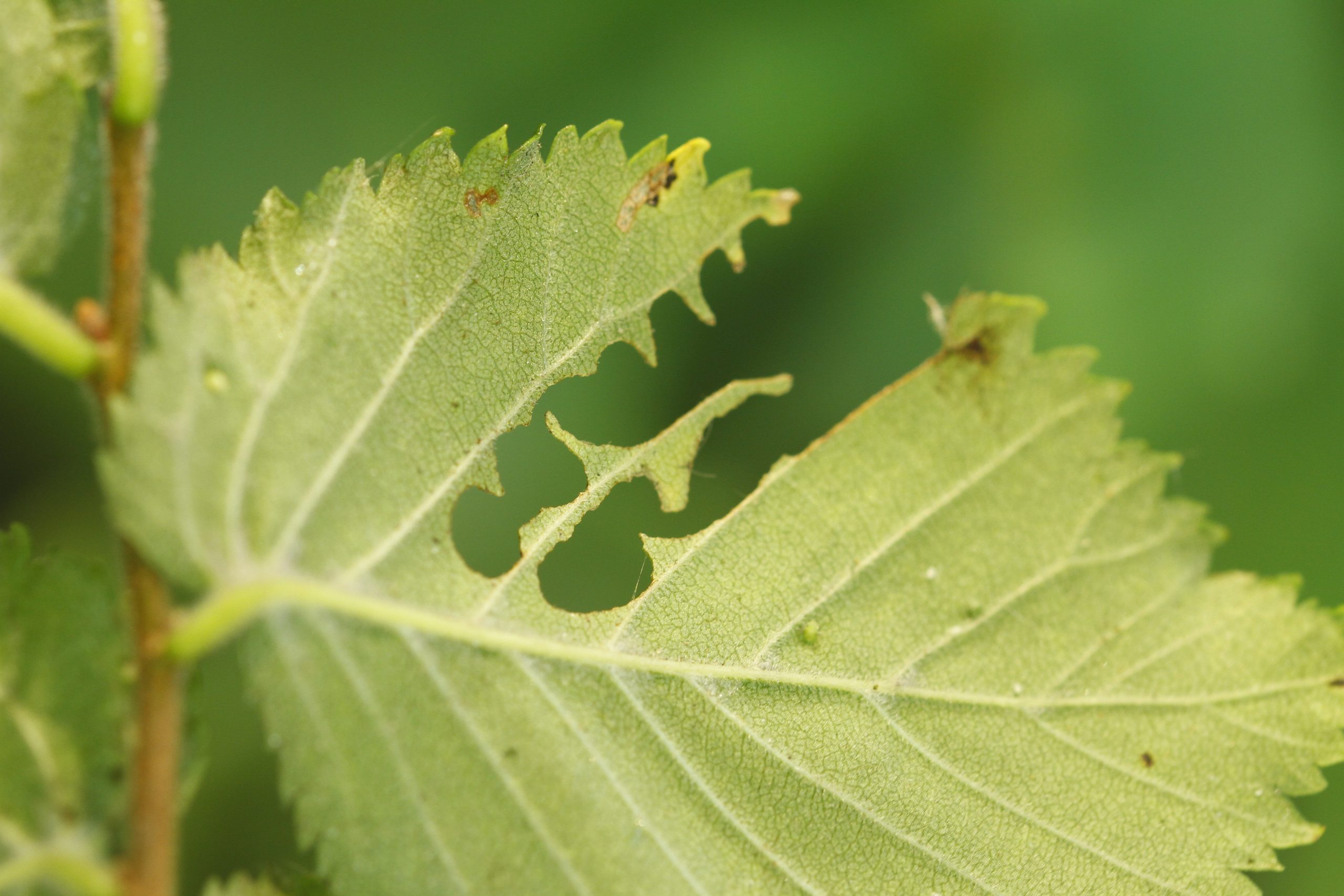
Feeding trace made by older larvae
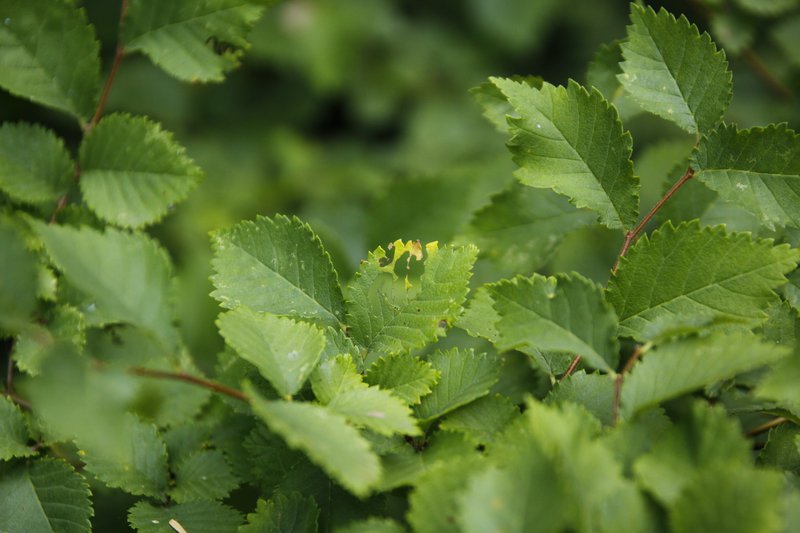
Another view of feeding traces made by mature larvae.
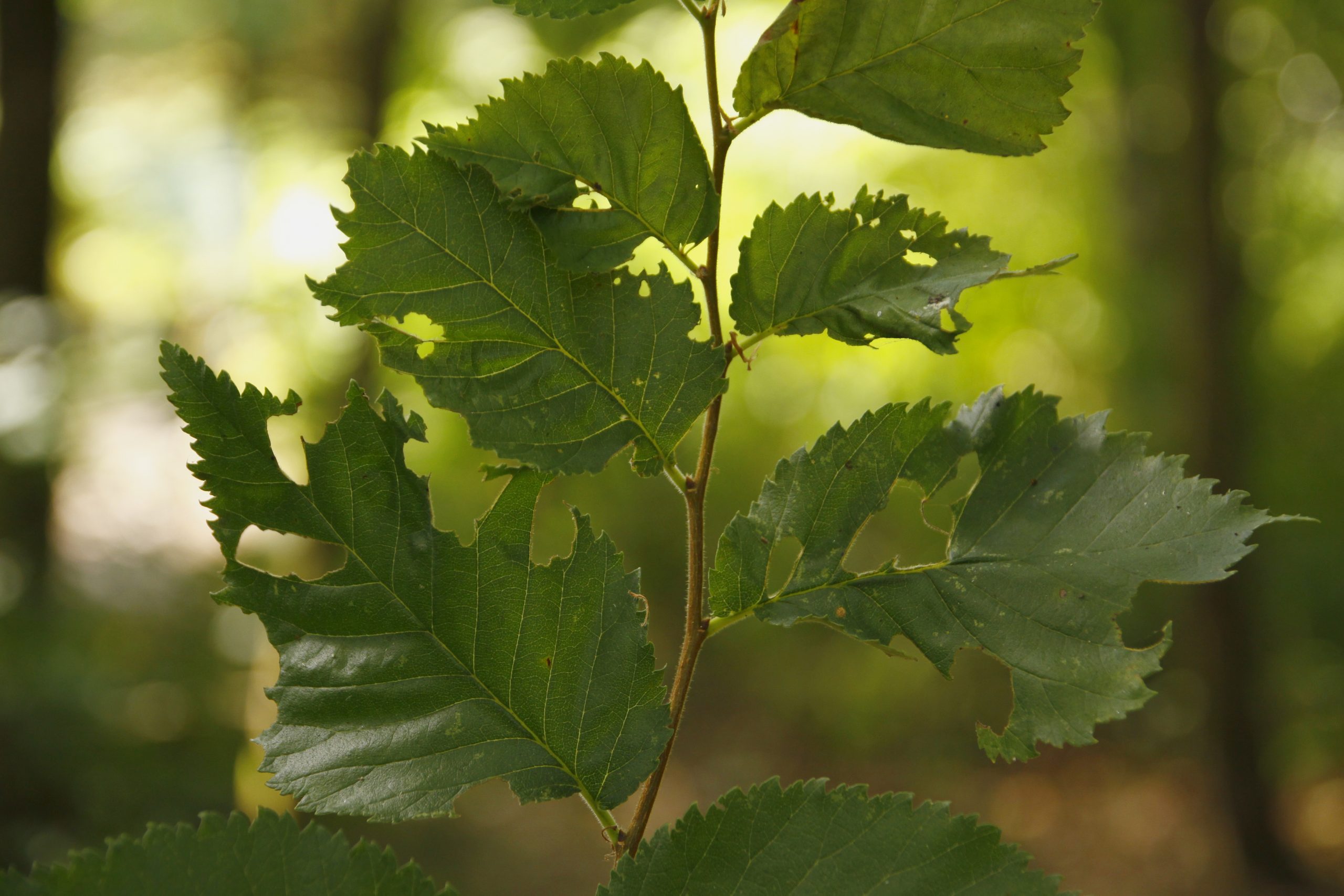
Feeding damage on elm leaves caused by other leaf-chewing insects. The various leaf feeders (or ‘external chewers’) which utilise elm often remove small chunks from leaves, but they don’t produce the characteristic zigzag pattern that young sawfly larvae make.
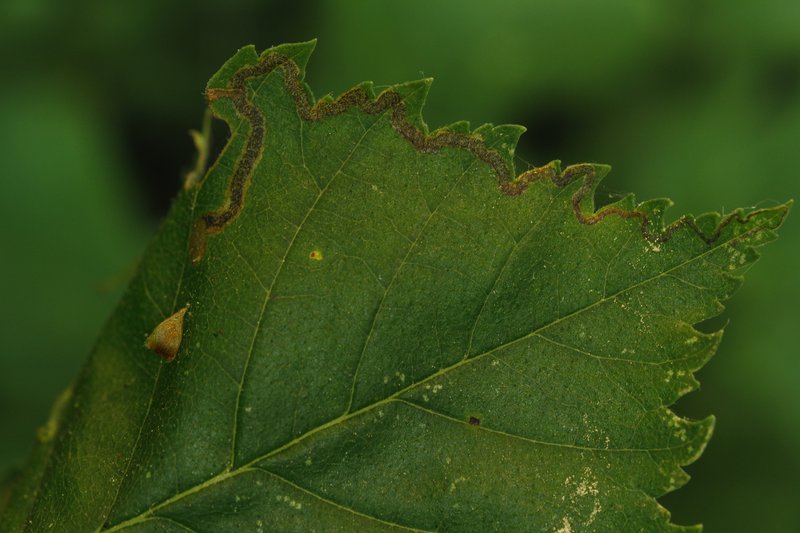
A feeding track around the edge of an elm leaf, formed by a leaf-mining species, possibly the larva of a red elm pigmy moth (Stigmella lemniscella). Elm zigzag sawfly is a leaf-chewing species, not a mining species. Leaf miners (or ‘internal chewers’), which feed between the leaf surfaces, produce a darkened feeding trace, as above, but don’t eat through the leaf itself.
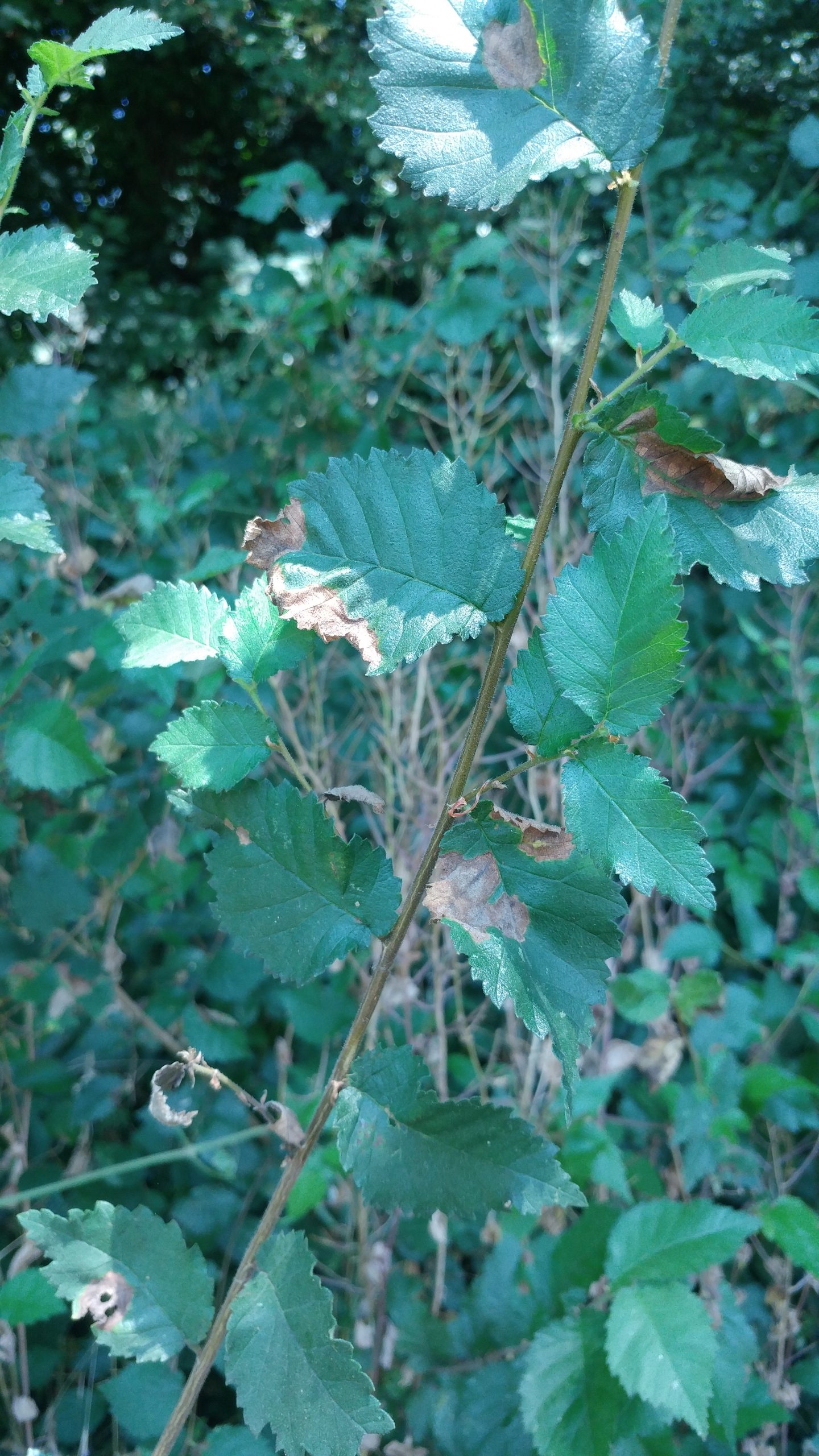
Damage to elm leaves made by organisms other than insects, such as fungi and bacteria.